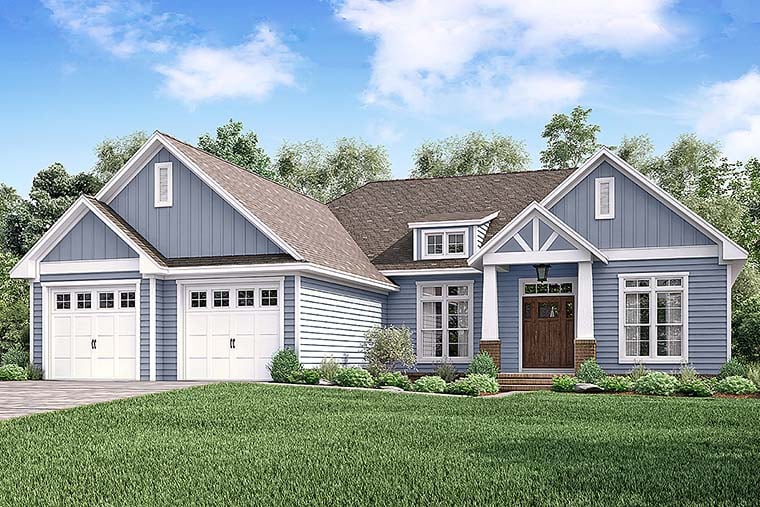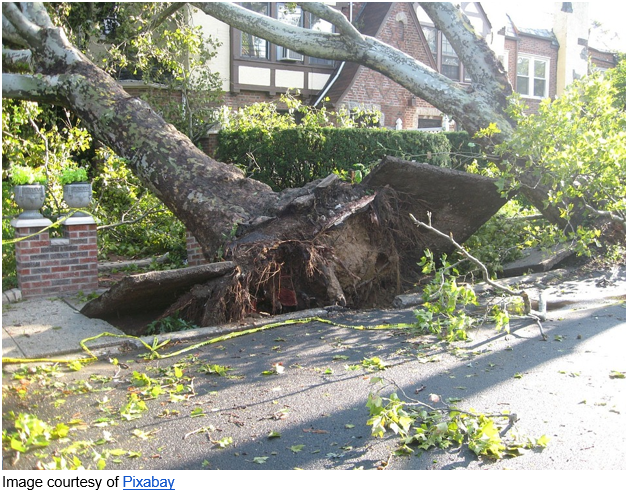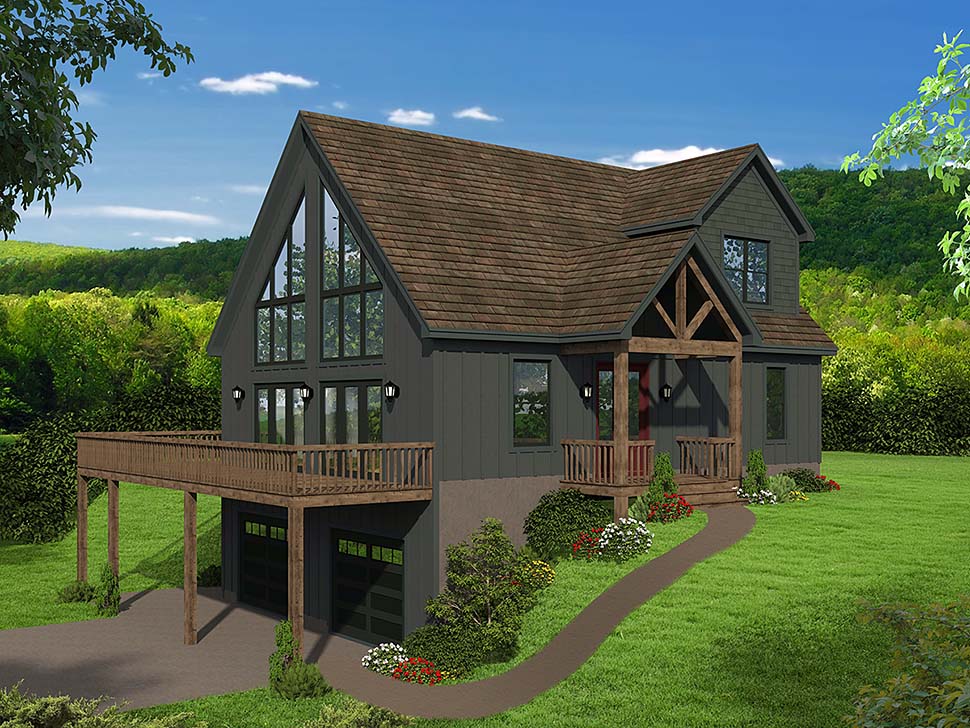Defining Reality for the Owner-Builder
By David Porter AIA – Consulting architect to the Garlinghouse Company since 1989
So, you are contemplating building a house. You have the option of trying to build it on your own or to hire a professional, licensed, experienced builder. Hmmm, already just reading over the words, “professional, licensed, and experienced” might make you question why you want to take on such a gigantic responsibility as trying to build your own house when you are not any of those three words.
You may have watched as a neighborhood house shot out of the ground and seemed to be quickly finished on the outside and then in what seemed like only days afterward, the moving van pulled up and you had a new neighbor. You thought, “Man that looked so easy that I should be able to build my own house.” You saw dollar signs hanging from tree branches for “all that money” you would save that a professional builder would want to charge you to manage the whole process to get your house built.
The success stories of owner’s building their own houses are far and few between. The process of building a house requires an enormous amount of coordination among hundreds of people before you sleep the first wink in the new digs. It is tantamount to that of a big band conductor managing all of the different instruments to produce a melodic, mistake-free, composition to sooth one’s tympanic membranes (ummm, ears). And, from musicians who have never played a single song together before. In building a house, you will need to find subcontractors to work together to compose all of the elements of the house. You will need to coordinate their efforts in a correct order so that one trade is not required to rip out the work they already completed because that work is now in the way of a trade you should have scheduled before them. Remember, “you” are the builder and the subs will look to you to coordinate and manage them just like a real builder would know how to do. If you had hired a builder and there was a mistake made during construction, you would not pay a dime more to get it fixed. But, since “you” are the builder, fixing incorrect work or out of sequence work will come out of your pocket.
You will need to have a considerable amount of free time during daylight hours to find subcontractors, get them plans to bid from, check our their references, conscientiousness, workmanship, reliability, etc. (just any name out of the Yellow Pages may not work), and then make sure that they show up and then stay there to work on your house to keep the job moving. The subs are your “orchestra” and you the conductor, and if you just throw a bunch of randomly picked subs onto your property and say “start building,” your end result could be a project as bad as the music of mismatched musicians sounding like fingernails on a blackboard. The management of the construction process is nearly a full-time job or your house might take two or three times the amount of months to get done than if you had used a professional builder.
You will also need to have some construction knowledge to know when a subcontractor has done something wrong or “has pulled one over on you” or you will need to hire someone to help you inspect the technical aspects of the completed work (that starts eating into “all that savings” you were planning on by not hiring a builder). No, your local building inspector will not perform that task. Oh, and by the way, you will need to miss days of work to be at the job when the inspector stops by for inspecting key construction work or, as I have found with most inspectors, they will leave and come back when the “builder” or the owner is available to hear what he/she has to say. The building inspector checks to make sure that the installed work meets the minimum levels of construction required by the building code. That doesn’t assure you at all that the plumbing has been installed correctly or if there are enough nails in all of the roof support structure to keep it fastened to the walls when the wind blows.
You might be pressured by a sub to pay for the work they have completed only later to find out that the work is substandard or maybe it was done out of sequence with other work because you didn’t know any better as to when it should have been done and now it needs to be redone or renovated to allow a duct to run through where a pipe is located. Too late. Your sub has your money and he may or may not show up to answer to your untrained opinion about his work. If you had him install the work out of the necessary sequence of construction, then the sub did nothing wrong and you will pay twice to get the same work redone after it gets ripped out. He knows that your job is probably the only one in his lifetime that he will get from you. If you were a builder he does plumbing for job after job, he would most definitely come back to fix a problem even if he had been fully paid for the completed work.
The main fallacy I have heard from many owner-builder clients over the years is that they “can save enough money not using a builder that it will pay for the swimming pool” so they will build the house on their own. When the cost of having a lot of work done twice, having the overall process take two to three times as long to get done, adding in your cost of lost income from missing a lot of time at work due to “house construction emergencies” coming up (like about twice a day) and requiring your attendance at the job site, not to mention the severe stress the whole process causes to a marriage or relationship and to family, it might be a good first step to speak with some builders and then with some owners having your similar lack of homebuilding experience who have built, or tried to build, their own house, and then decide whether becoming a one-time homebuilder has any real monetary savings.
‘Til next month, hoping your building experiences are happy ones.
David is a licensed architect in 22 US states and has been the only architect consultant to the Garlinghouse Company since his hiring by Whitney Garlinghouse “way back” in 1989. David continues to provide a complete architectural and code consulting service for all of the house plans produced and sold by the Garlinghouse Company. David grew up waddling his youth through the concrete he poured with his father, swinging a hammer and a broom, running heavy equipment during his elementary and high school years, laying 400 brick a day by middle school, and designing and putting construction drawings together on the kitchen table for his parent’s homebuilding business starting as early as sixth grade. You could say he learned the home building business literally from “in the ground, up.” He has been a licensed architect specializing in residential projects since 1981 and his hands-on homebuilding upbringing has made him a very practical architect with the first-hand knowledge to make designs buildable.
Building Your Own Home fot Dummies (Useful Book)
How to build a dream house – without breaking the bank. Packed with useful information, tips, and checklists, this easy-to-follow guide shows people step by step how to build a unique, beautiful home on any budget. It covers all the must-know issues, from acquiring land, finding the best architect, and cutting design costs to putting together financing, hiring (or not hiring) a general contractor, and overseeing construction.
Be Your Own House Contractor (Useful Book)
If you can balance a checkbook and deal fairly and competently with others, you can manage an entire construction project yourself–find and purchase land, set a workable budget, and hire subcontractors to do the actual building. Save as much as 25 percent off the price of a new house simply by understanding and controlling your costs.






Leave a Reply